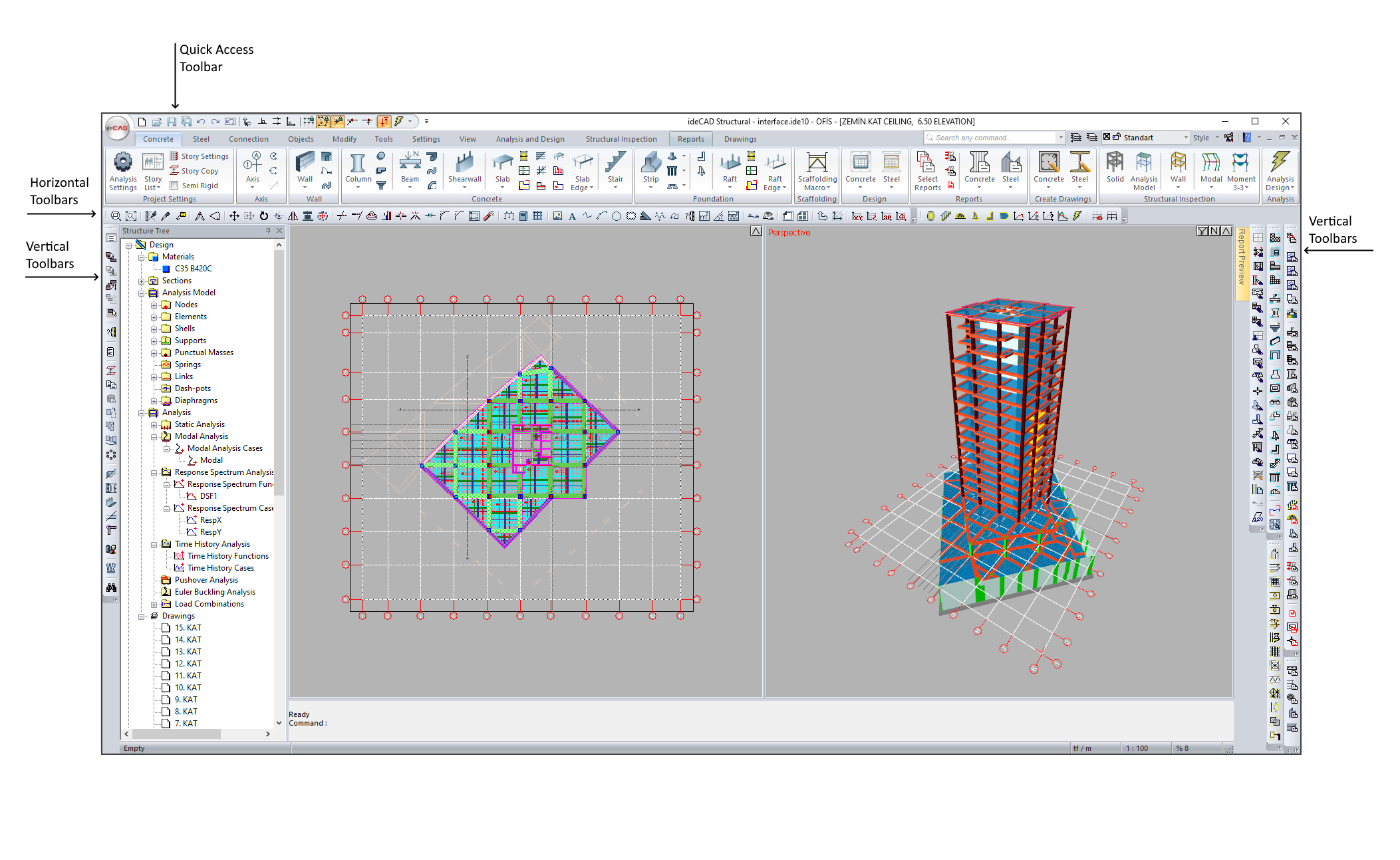Toolbars and Command Buttons
The ideCAD interface has command buttons (icons) representing each command. These icons are located on toolbars. Toolbars provide ease of access to the user when using commands. Different designs such as toolbars, auxiliary toolbars, and quick access toolbars were made according to command variety and function. In addition, the shape of the mouse cursor is customized according to the command entered or the action being performed. Thus, while working, the mouse cursor enters various shapes.
Command Buttons
Command buttons are the icon that represents the command. When clicked with the left mouse button, the corresponding command will run. The table below shows an example for some commands.
Sample Command Button | Passive Command Icon | Active Command Icon |
|---|---|---|
DN Lock |  |  |
Move |  |  |
Zoom Window |  |  |
Scale (reference) |  |  |
Toolbars
Toolbars are toolbars with icons on them. Toolbars provide convenience for the user to access commands. In the default view of the ideCAD, there are Quick access toolbar, Horizontal and Vertical toolbars. Toolbars and icons are arranged according to the frequency of use in the program and the relationship of the commands with each other. However, these can be customized by the user.

Auxiliary Toolbars (Auxiliary Toolbars)
In the ideCAD, there are floating toolbars as well as fixed toolbars. Floating toolbars are toolbars that appear on the screen when some commands are active and disappear again when the relevant command is exited. These toolbars contain sub-commands associated with the command. For example; When the beam command is active, there are sub-command icons such as Continuous Beam, Curved Beam and Beam Settings on the Beam toolbar.

Quick Access Toolbar
Using the quick access toolbar, you can easily access commands such as recording operations, object locking commands, analysis button that you frequently use during project drawing. When you press the left button of your mouse on the quick start bar, you can customize the toolbar as you want from the dialog that opens by clicking the 'Customize Quick Entry Toolbar' line from the menu that opens.

Cursors
While working in the ideCAD, the mouse cursor enters various forms. The shape of the mouse cursor is an indicator of a command entered or an action performed in the ideCAD.
If no mode is active, the cursor is in a blank state. The empty cursor is never locked on the nodes. The cursor shape does not change. If Lock to Joints is active, it changes shape when the cursor is over the joint while in the object command. Some commands are commands in several stages (move, rotate, reinforced concrete calculus, etc.). At different stages of such commands, the cursor also takes different shapes. Some of the shapes of the cursor are given as examples in the table below:
Command | Cursor | Command | Cursor |
|---|---|---|---|
Null |  | Slab |  |
Stretch Node |  | Line |  |
Wall |  | Window and Door |  |
Beam |  | Snap to Grid |  |
Column |  | Zoom Window |  |
Next Topic
